Abstract
The respiration of mitochondria isolated from germinating soybean cotyledons was strongly resistant to antimycin and KCN. This oxygen uptake was not related to lipoxygenase which was not detectable in purified mitochondria. The antimycin-resistant rate of O2 uptake was greatest with succinate as substrate and least with exogenous NADH. Succinate was the only single substrate whose oxidation was inhibited by salicyl hydroxamic acid alone, indicating engagement of the alternative oxidase. Concurrent oxidation of two or three substrates led to greater involvement of the alternative oxidase. Despite substantial rotenone-resistant O2 uptake with NAD-linked substrates, respiratory control was observed in the presence of antimycin, indicating restriction of electron flow through complex I. Addition of succinate to mitochondria oxidizing NAD-linked substrates in state four stimulated O2 uptake substantially, largely by engaging the alternative oxidase. We suggest that these properties of soybean cotyledon mitochondria would enable succinate received from the glyoxysome during lipid metabolism to be rapidly oxidized, even under a high cytosolic energy charge.
Full text
PDF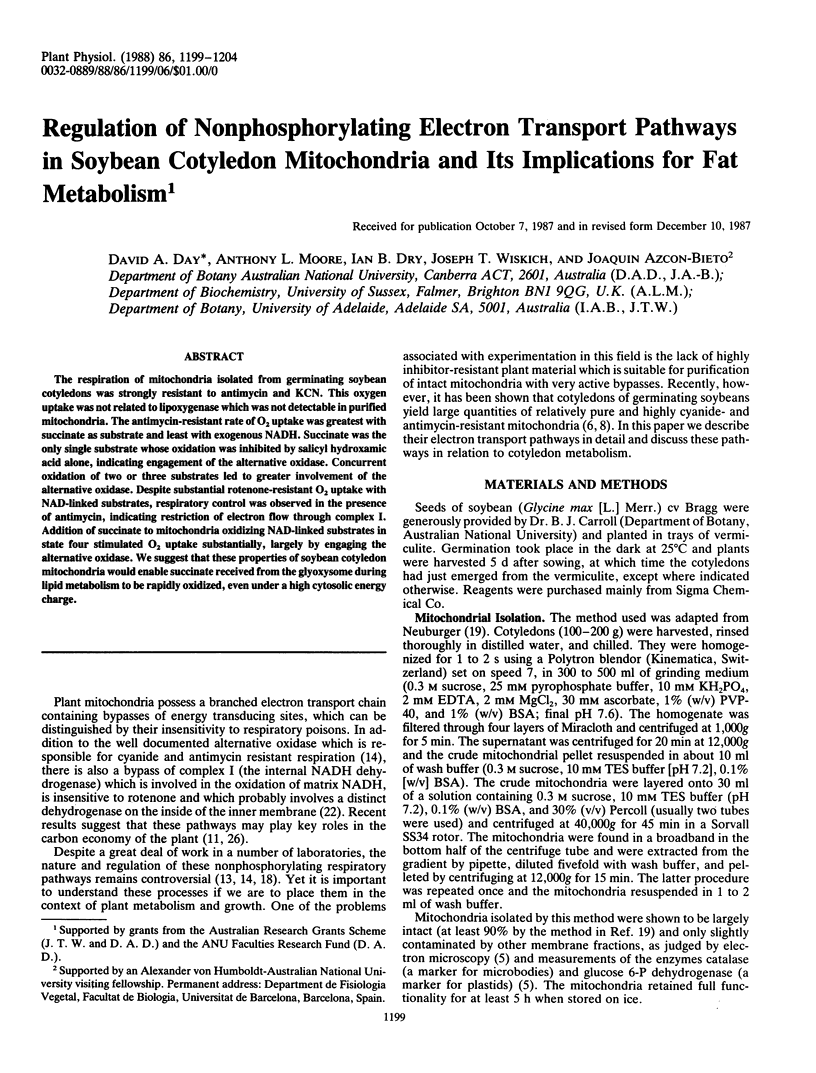
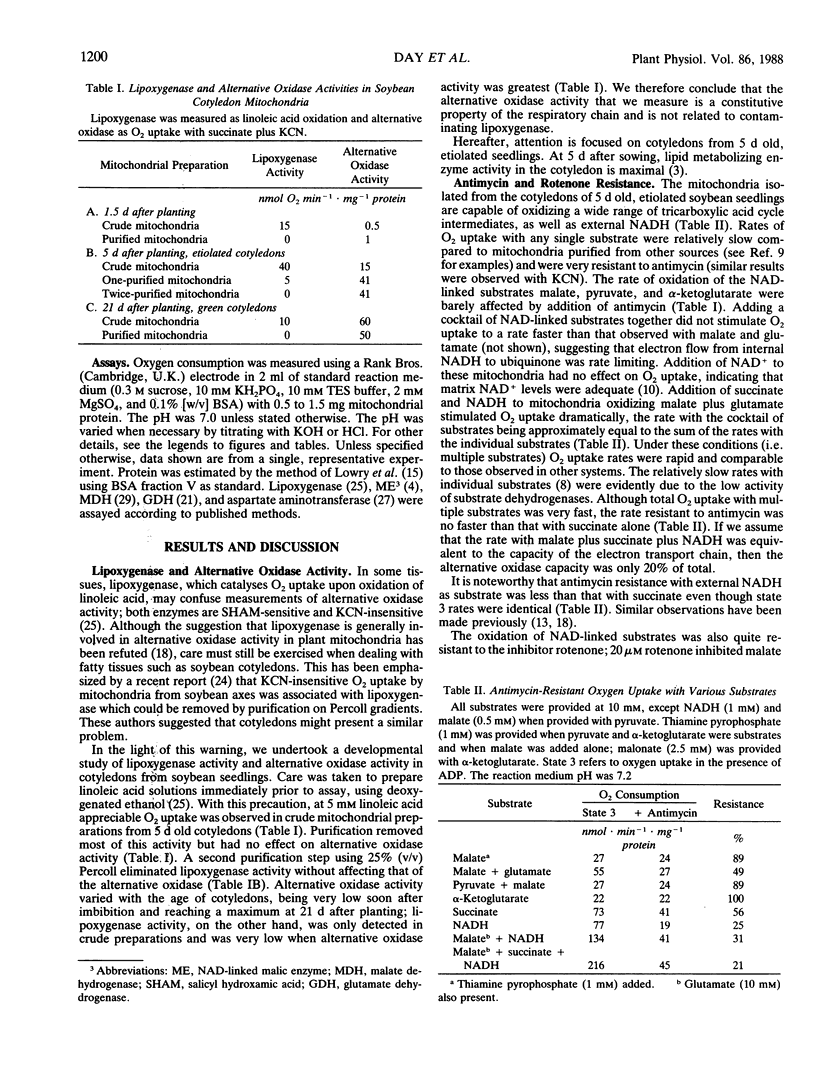
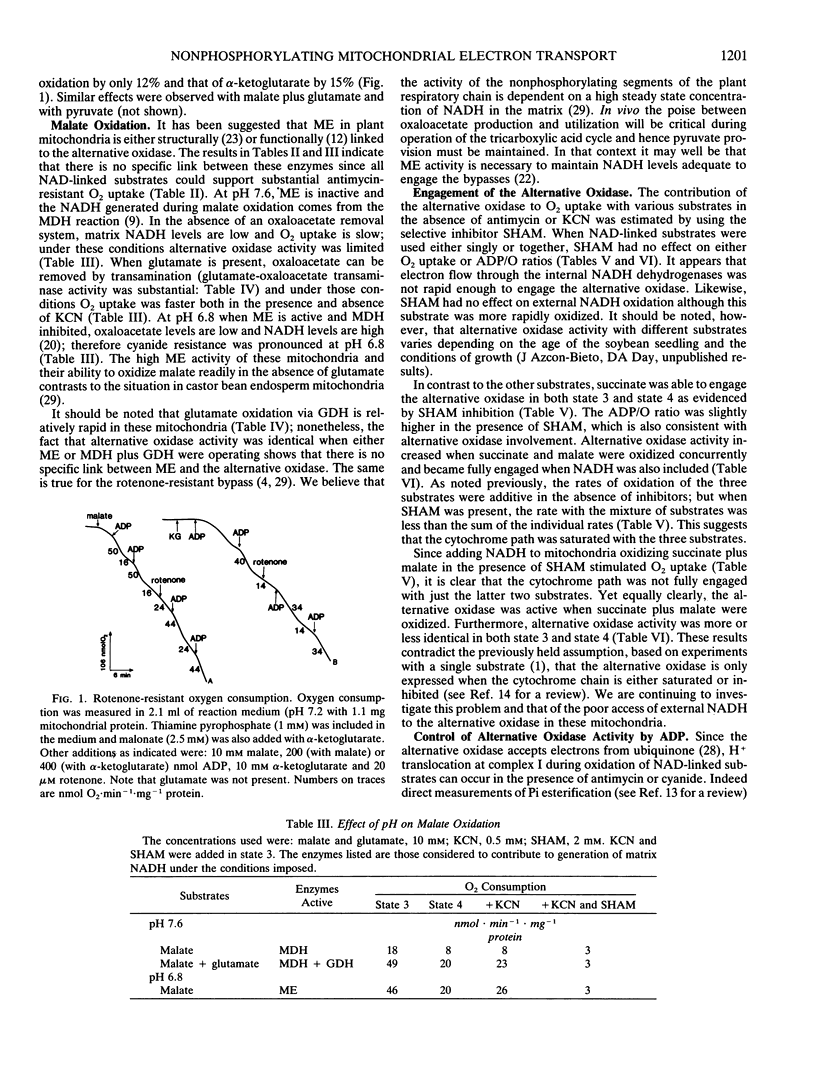
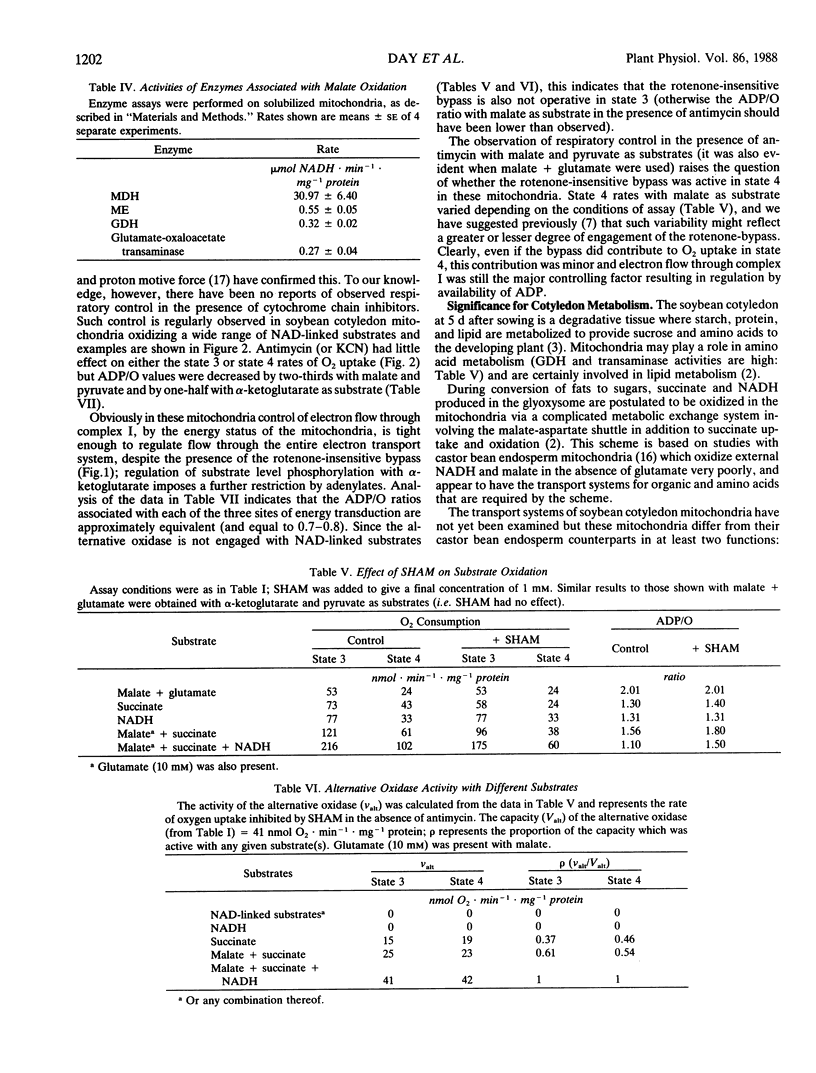

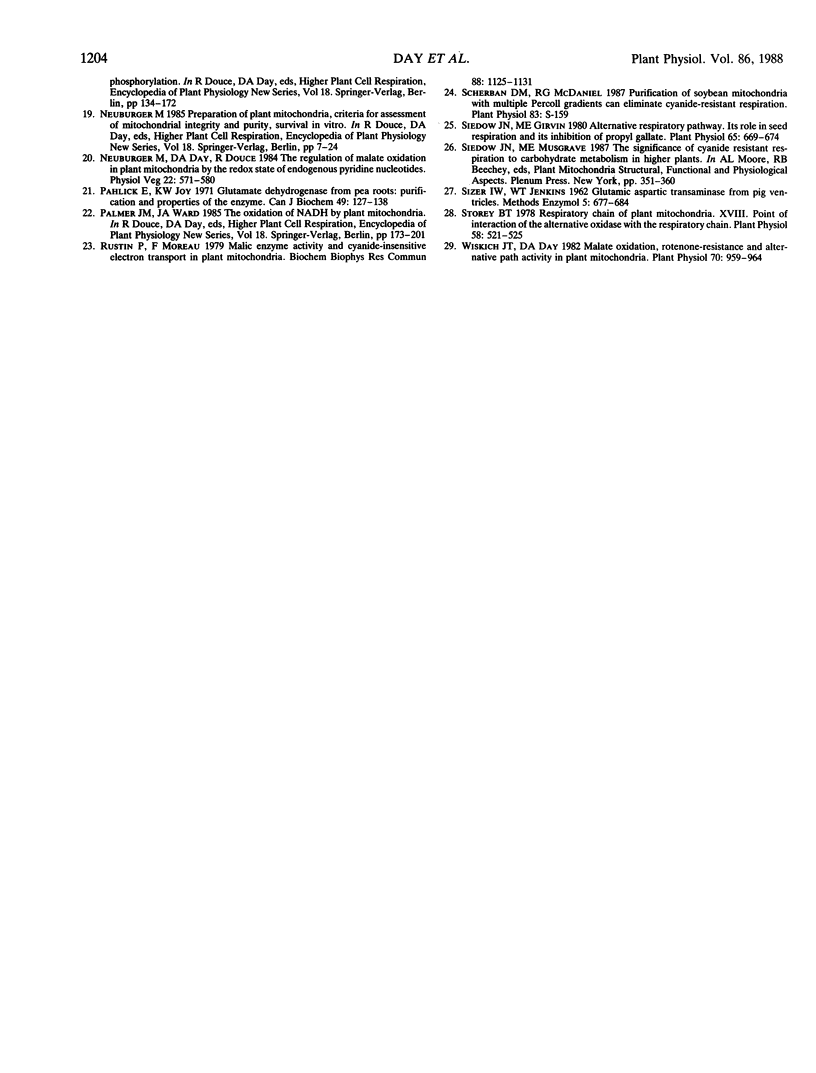
Selected References
These references are in PubMed. This may not be the complete list of references from this article.
- Bahr J. T., Bonner W. D., Jr Cyanide-insensitive respiration. II. Control of the alternate pathway. J Biol Chem. 1973 May 25;248(10):3446–3450. [PubMed] [Google Scholar]
- LOWRY O. H., ROSEBROUGH N. J., FARR A. L., RANDALL R. J. Protein measurement with the Folin phenol reagent. J Biol Chem. 1951 Nov;193(1):265–275. [PubMed] [Google Scholar]
- Moore A. L., Bonner W. D., Jr, Rich P. R. The determination of the proton-motive force during cyanide-insensitive respiration in plant mitochondria. Arch Biochem Biophys. 1978 Mar;186(2):298–306. doi: 10.1016/0003-9861(78)90439-3. [DOI] [PubMed] [Google Scholar]
- Pahlich E., Joy K. W. Glutamate dehydrogenase from pea roots: purification and properties of the enzyme. Can J Biochem. 1971 Jan;49(1):127–138. doi: 10.1139/o71-018. [DOI] [PubMed] [Google Scholar]
- Siedow J. N., Girvin M. E. Alternative Respiratory Pathway: ITS ROLE IN SEED RESPIRATION AND ITS INHIBITION BY PROPYL GALLATE. Plant Physiol. 1980 Apr;65(4):669–674. doi: 10.1104/pp.65.4.669. [DOI] [PMC free article] [PubMed] [Google Scholar]
- Storey B. T. Respiratory Chain of Plant Mitochondria: XVIII. Point of Interaction of the Alternate Oxidase with the Respiratory Chain. Plant Physiol. 1976 Oct;58(4):521–525. doi: 10.1104/pp.58.4.521. [DOI] [PMC free article] [PubMed] [Google Scholar]
- Wiskich J. T., Day D. A. Malate oxidation, rotenone-resistance, and alternative path activity in plant mitochondria. Plant Physiol. 1982 Oct;70(4):959–964. doi: 10.1104/pp.70.4.959. [DOI] [PMC free article] [PubMed] [Google Scholar]


